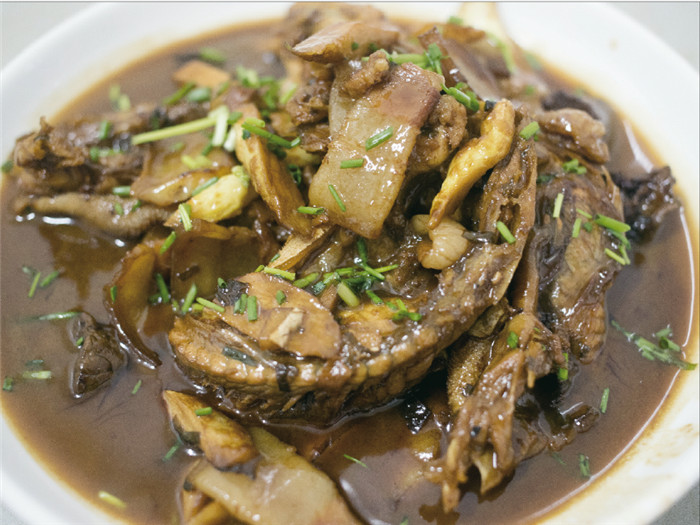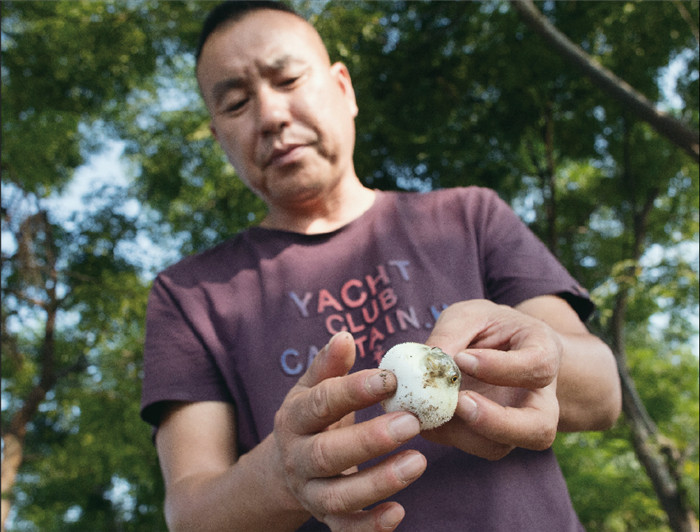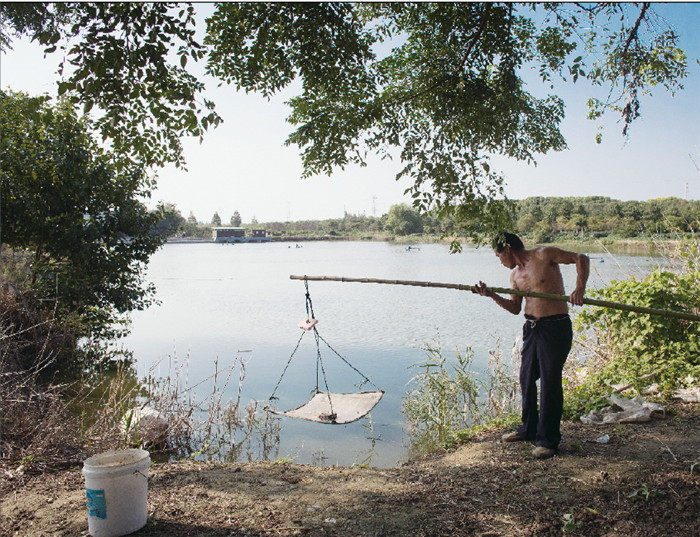Flirting with death


Often likened to playing Russian roulette on the dining table, eating pufferfish is not merely a novelty in east China - it's a tradition
Before each plate of red braised pufferfish makes its way from the kitchen to the table, Gu Jianpei sneaks a bite and waits for about 30 minutes, the amount of time he has deemed sufficient to determine whether he gets poisoned.
Unlike Japanese chefs who need to undergo years of training before they can serve the prized delicacy, Gu has no such credentials.
But no one has died from eating his fish, said the 45-year-old, who runs a pufferfish farm on Shanghai's Chongming Island.
Known as one of the most poisonous creatures on the planet, pufferfish contain tetrodotoxin, which can be found in body parts such as the liver, intestines, skin and gonads. The poison has been found to be 1,200 times more lethal than cyanide.

Although the fish was banned in China in 1990 after a spike in the number of deaths caused by consumption, Jiangsu province has always been a gray zone where businesses continued to sell the fish. According to a local newspaper, the province consumes an average of 20,000 metric tons of pufferfish every year. Jiangsu people have even nicknamed the province as "the special zone for pufferfish in China".
Unlike some adventurous diners who view eating pufferfish as an opportunity to flirt with death, residents of Jiangsu see the consumption of this fish as a deep-seated tradition that has been around for thousands of years. The pufferfish is also considered one of the three delicacies in the Yangtze River, alongside knifefish and reeves shad, both of which are on the verge of extinction.
Qian Xiaoming, chairman of Zhongyang Group, the country's largest producer of the fish, estimated that the domestic pufferfish market can be worth 10 billion yuan ($1.6 billion) if fully tapped.
Gu was not always a fish farmer. He started out as a stock broker who made his fortune in the 1990s before deciding that he wanted a career that did not involve so much risk-taking. He made up his mind to start a pufferfish farm after he first tasted the dish at his mother-in-law's home.
"I still remember my first bite of the fish. It instantly convinced me that it was something worth risking my life to taste," he said.
Gu then approached his brother-in-law, who is an aquaculture expert, to help with setting up a farm. Gu said that they have managed to reduce the toxicity levels of their fish by 90 percent. He said that the key to doing so lies in feeding the fish fodder instead of algae which they usually consume.
According to Meng Xuesong, deputy director of the China Pufferfish Branch under the China Fishery Association, many fish farms in the region have for the past few decades been working to "detox" the fish in order to make it safer for consumption.
Last November, the Ministry of Agriculture published a joint statement with the national Food and Drug Administration announcing that pufferfish that are artificially bred can be sold in the country under certain conditions.
According to the new regulations, only two of the 40 types of pufferfish found in China are allowed for trading. In addition, these two species can only be traded after being processed by authorized farms or companies. The sale of wild and raw pufferfish for consumption is still banned in China.
"Everything is going to be different. With the new regulation, pufferfish could become as popular as hairy crabs in China," said Gu, whose pufferfish farm is likely to be the first authorized breeding facility in Shanghai.
Since the introduction of the new regulation, Gu has invested tens of thousands of yuan to buy 200,000 pufferfish fries for his customers. He is also thinking about developing a "pufferfish tourism industry" where people can fish and savor their own catches.

Zhongyang Group said it has already started to produce dumplings stuffed with pufferfish meat and peeled pufferfish. The State-owned fishing and farming company, which used to export the majority of its products to Japan and South Korea, also said that it would be working with domestic insurance companies to assure consumers of the safety of its products.
According to the company, connoisseurs of this fish might be able to sign up for insurance policies that cover death or injury caused by consumption of this delicacy.
There would, of course, be a caveat - policy owners can only make an insurance claim if their condition is caused by eating artificially bred pufferfish.
xujunqian@chinadaily.com.cn
- Scholars call for ecological protection of Tunbu culture
- Cross-Strait exhibition highlights Chinese crested tern conservation
- China halts port fees on US vessels for one year
- China moves to cut teachers' administrative workload
- China launches group of internet satellites into orbit
- Former senior official expelled from CPC for serious violations




































